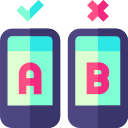
Engagement Levels: Classroom vs. Virtual Lessons
Welcome to today’s spotlight theme: Engagement Levels—Classroom vs. Virtual Lessons. We’ll compare what truly keeps learners present, curious, and connected in physical classrooms and online spaces, with research, stories, and practical tactics you can try today. Share your perspective in the comments and subscribe for more engagement-centered insights.
Cognitive, Behavioral, Emotional: A Three-Part Lens
In classrooms, behavioral cues like eye contact and note-taking are visible, while online settings highlight cognitive and emotional traces through chat, polls, and reflective prompts. Consider how each dimension surfaces differently and tell us which signs you watch.
Signals You Can Trust
Raised hands and hallway chatter once signaled success. Virtually, we read engagement through consistent chat responses, thoughtful breakout contributions, on-time submissions, and follow-up questions. Which signals most reliably reflect learning for your context and learners?
A Classroom vs. Virtual Snapshot
In a science class, a shared gasp during a live demo reveals collective curiosity. Online, an unexpected flurry of chat hypotheses reveals the same spark. Different channels, same fire. Share the signals you notice and celebrate most.
Evidence and Trends Shaping Engagement

Across studies, active learning boosts engagement and achievement regardless of modality, while passive delivery dampens attention. Structure and interactivity consistently predict better outcomes. Which active elements do you reliably embed, and how do you measure their impact over time?
Classroom-First Tactics that Spark Participation
01
Active Stations and Visible Thinking
Design rotating stations with brief, purposeful tasks and thinking routines posted at each stop. Learners move, talk, annotate, and synthesize. The physical shift refreshes attention, while visible outputs give you instant insight into understanding and misconceptions.
02
Warm Calls over Cold Calls
Give students a minute to jot or pair-share, then invite named contributions. This protects dignity while raising accountability. You’ll hear from more voices, reduce anxiety, and keep momentum without sacrificing the depth that thoughtful wait time produces.
03
Rituals that Build Belonging
Start with a quick community check-in, a shared norm recap, or a student-led opener. Predictable rituals reduce uncertainty and welcome participation. Ask students to pitch a ritual and co-own it; belonging rises, and engagement follows naturally.
Assign roles—facilitator, scribe, timekeeper—and give concise tasks with deliverables. Set a midpoint check, then reconvene with rapid report-outs. This structure lifts engagement by clarifying expectations and ensuring every learner contributes meaningfully within limited time.
Virtual-First Tactics that Keep Learners Present
Bridging the Gap: A Hybrid Engagement Playbook
Flip the Input, Live the Practice
Deliver content in short, captioned videos and reserve live time—classroom or virtual—for application, coaching, and feedback. Engagement shifts from passive listening to active doing, and learners arrive prepared to wrestle with authentic, challenging problems together.

Equity, Access, and Belonging Across Modalities

Tech Access and Time Realities
Not every learner has stable devices or bandwidth. Offer asynchronous pathways, downloadable materials, and low-tech options. In-class, provide shared resources and flexible deadlines. Engagement blooms when structural barriers are addressed with empathy and practical solutions.

Neurodiversity and Sensory Needs
Reduce overload with clear agendas, chunked tasks, and predictable routines. Provide quiet corners in classrooms and optional audio-off processing time online. Multiple ways to participate—voice, chat, visuals—invite students to engage through their genuine strengths and preferences.

Universal Design for Learning in Action
Offer choices for representation, expression, and engagement—video, text, sketch notes; talks, posts, prototypes; solo or group. UDL turns variety into a design principle, raising engagement by aligning tasks with accessible, motivating pathways for every learner.


Stories from the Field: Real Engagement Moments
In class, whiteboards and gallery walks sparked debate about slope. Online, a collaborative graphing tool reproduced the energy, with students posting conjectures in chat. Engagement rose when students critiqued each other’s reasoning, not just arriving at answers.
Stories from the Field: Real Engagement Moments
Face-to-face, students leaned into body language and tone. Virtually, roles and shared annotations kept pace lively. The key insight: pre-reading voice memos doubled contributions, giving hesitant speakers a safe on-ramp to join deeper discussion with confidence.
